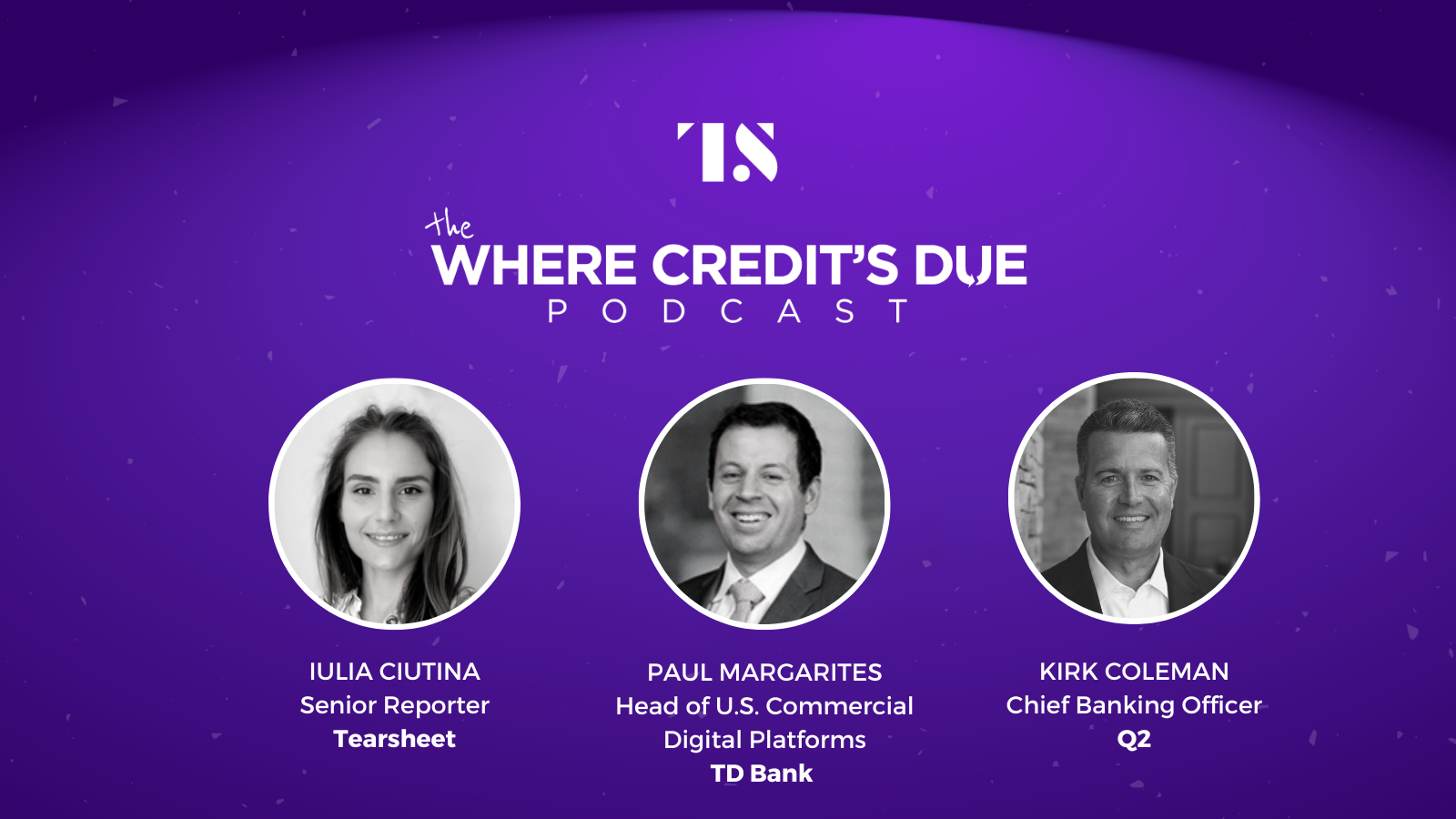Where Credit's Due Podcast
Where Credit’s Due Ep. 6: Digitizing commercial banking with Q2 and TD Bank
- Banks are starting to digitize and upgrade their commercial and SMB infrastructure, and various companies are coming in with software products to help them bridge this gap.
- Joining me today are Paul Margarites, Head of U.S. Commercial Digital Platforms at TD Bank and Kirk Coleman, Chief Banking Officer at Q2.








